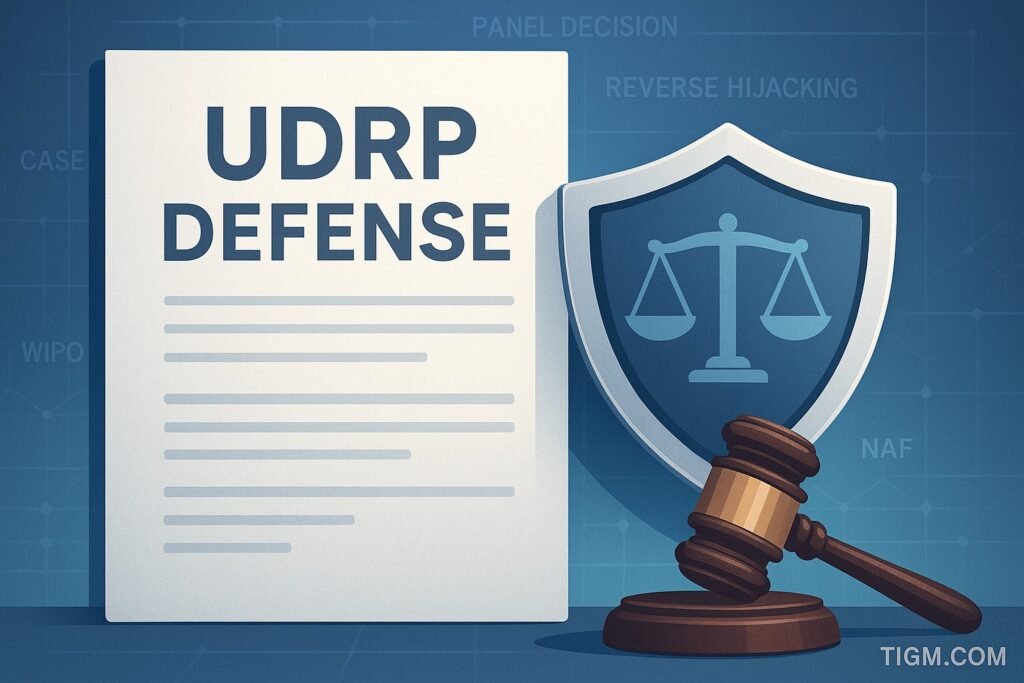When facing a UDRP complaint, domain owners often assume the worst. But October 2025 decisions reveal that respondents with the right defense strategies can successfully protect their investments—even against trademark holders with seemingly strong claims.
The Power of Plausible Explanation
October’s standout defensive win involved a physician and domain investor who faced a UDRP over a healthcare-related domain. Rather than simply denying allegations, the respondent provided a detailed, plausible explanation demonstrating professional interest in healthcare terminology, a documented history of investing in medical domains, and specific plans unrelated to the complainant’s trademark.
The result? The panel accepted the explanation as legitimate and denied the complaint.
Key takeaway: Panels don’t require proof beyond doubt—they need a believable, logical explanation for registration that doesn’t revolve around exploiting someone else’s trademark. “Plausible” is the operative word.
What Makes an Explanation Work?
Successful defenses share common elements:
- Consistency with background: Professional expertise or business focus that logically connects to the domain
- Alternative meanings: Demonstrating dictionary definitions, common uses, or geographic significance beyond the trademark
- Documentation: Evidence of related domain holdings, business plans, or industry involvement
- Absence of targeting: No evidence of specifically researching the complainant’s brand
No Trademark Search Required
In a significant October 2025 ruling, a UDRP panel explicitly stated there is no “per se legal obligation” for domain registrants to conduct trademark searches before registration.
Complainants frequently argue that respondents should have discovered their trademark through a simple search, claiming failure to search demonstrates bad faith. The October panel firmly rejected this argument.
Why this matters: Domain investors can legitimately register based on generic value, brandability, acronym potential, or geographic significance—without first checking trademark databases.
However, this defense works best when coupled with evidence of legitimate interest. Simply claiming ignorance without explaining why you wanted the domain won’t suffice.
Important limits: This doesn’t protect obvious targeting of famous marks, excuse registration after actual knowledge, or overcome evidence of specifically researching the complainant.
When Similarity Isn’t Enough: rockrobotics.com
Case No. D2025-3629 showed that even confusing similarity doesn’t guarantee complainant success. Rock Robotic Inc. filed against Phoenix LiDAR Systems for rockrobotics.com—clearly similar to their trademark—but the panel denied the complaint after finding insufficient proof of bad faith.
Defense lesson: Under UDRP, complainants must prove ALL three elements—similarity, no respondent rights, AND bad faith. Strong defensive focus on legitimate interests or absence of bad faith can succeed even when similarity exists.
Defensive Best Practices
1. Build Your Narrative
Create a coherent story explaining why you registered the domain, how it fits your business strategy, and what value it has independent of the trademark.
2. Document Everything
Provide evidence: business plans, portfolio information showing similar domains, professional background establishing relevant expertise, and proof of generic/descriptive value.
3. Establish Legitimate Business Model
If you’re a domain investor, show you acquire domains based on generic value, not trademark targeting. Demonstrate industry knowledge and legitimate resale business.
4. Prove Generic Value
Show domains have meaning beyond the trademark: dictionary definitions, industry terminology, geographic significance, or common acronyms with broad application.
5. Address Claims Directly
Don’t just deny—explain why complainant’s evidence doesn’t prove targeting, how alternative explanations account for the facts, and what they’ve mischaracterized.
What Doesn’t Work
Failed defenses consistently include:
- “I didn’t know about your trademark” without explaining legitimate interest
- Passive holding without explanation
- Generic denials without supporting evidence
- Attacking complainant’s trademark validity (not relevant to UDRP)
Key Takeaways for Domain Investors
October 2025 cases provide clear guidance:
DO: Maintain documentation of investment strategy, develop plausible use cases, focus on generic value and alternative meanings, and respond substantively with evidence.
DON’T: Assume similarity means automatic loss, rely solely on “I didn’t know” defenses, or fail to establish a legitimate business model.
Conclusion
October 2025 UDRP decisions demonstrate that thoughtful, strategic defenses successfully protect domain investments. The keys are establishing plausible explanations for registration, demonstrating legitimate interests independent of trademarks, and recognizing panels don’t expect registrants to search trademark databases before every purchase.
The “no trademark search obligation” ruling provides significant protection for investors focusing on generic terms and brandable phrases. Combined with documented business models and credible explanations, respondents have powerful tools to defeat even strong-seeming complaints. Success requires understanding what panels evaluate and providing evidence demonstrating legitimate rights and absence of bad faith.








